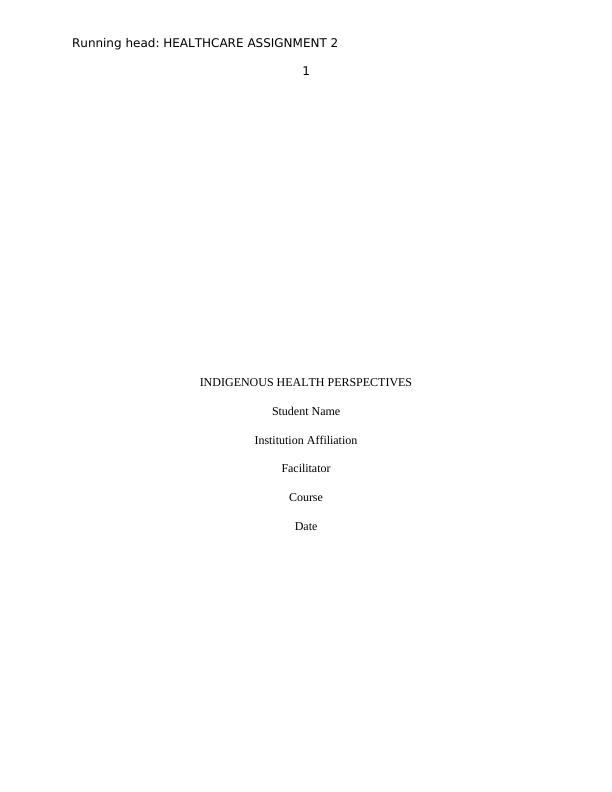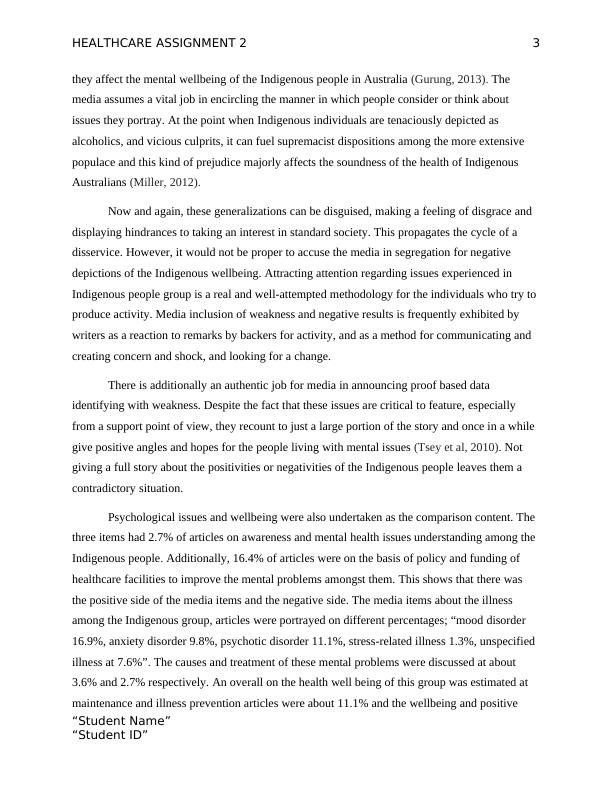Analysis of Media Items and Their Impacts on Australian Indigenous People's Mental Health Issues
An analysis of media items and its impact on Australian Indigenous people’s health and wellbeing issues
9 Pages2586 Words73 Views
Added on 2023-03-20
About This Document
This research analyzes the portrayal of mental health and illness among Australian Indigenous people in media items. It explores the effects of media on mental health and the role of media in shaping perceptions and stereotypes. The analysis reveals both positive and negative impacts, highlighting the need for responsible reporting.
Analysis of Media Items and Their Impacts on Australian Indigenous People's Mental Health Issues
An analysis of media items and its impact on Australian Indigenous people’s health and wellbeing issues
Added on 2023-03-20
ShareRelated Documents
End of preview
Want to access all the pages? Upload your documents or become a member.
Health Disparities and Mental Health Problems among Indigenous Populations in Australia
|14
|2527
|182
Role of Media in Reporting Health Issues of Australian Indigenous People
|14
|1837
|223
Sample Assignment on Trauma PDF
|14
|3459
|24
Understanding Public Relations - Indigenous Health
|10
|1097
|67
Portrayal of Indigenous People in the Media
|7
|2300
|95
Assignment on Nursing document
|12
|2840
|86



